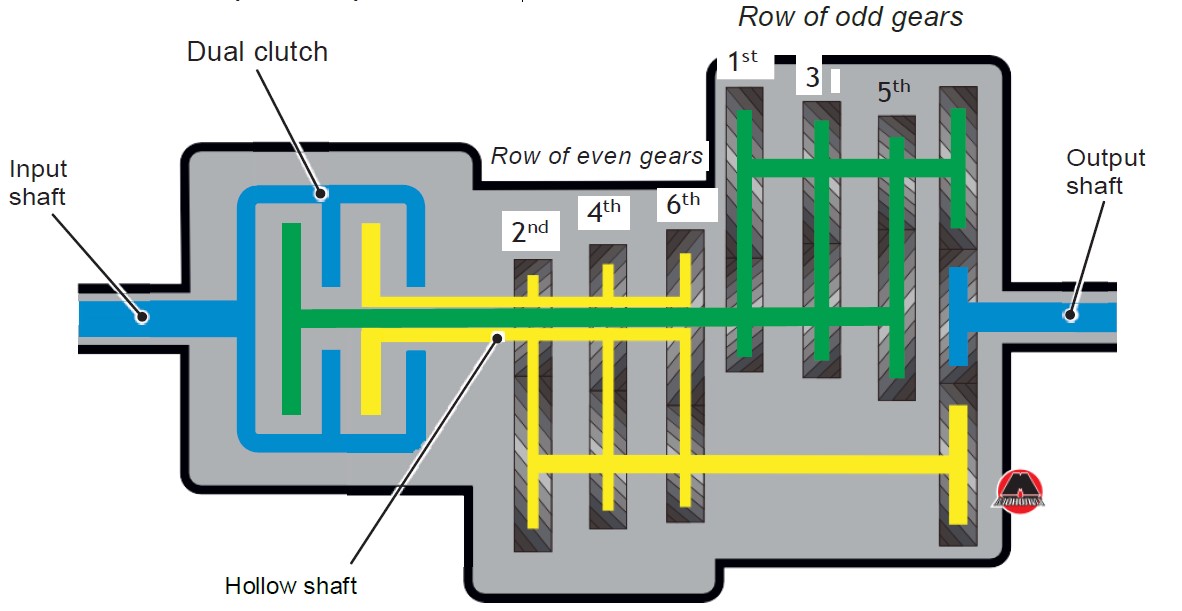5.3.17 Automatic transmission work
Figure 5.30 shows a diagram of the operation of a preselective gearbox. There are two clutches: one for the shaft with "even" rows of gears, the other for the shaft with "odd" rows of gears. The clutch shafts, in turn, transmit rotation to the driven shafts, and those to one output shaft, as shown in the diagram.
Note
We can call a shaft "even" or "odd" depending on which gears are engaged on that shaft.
How can be smooth switching achieved without interrupting the power flow?
The driver turned on the first gear, the clutch of the “odd” shaft closes and transfers traction from the crankshaft to the driven shaft and then to the output shaft and wheels. When shifting to second gear, the "odd" clutch is not disengaged yet, but the "even" clutch starts to engage. That is, the "even" shaft starts receiving part of the thrust from the engine. At a certain moment, the "odd" clutch is completely disengaged, and the "even" clutch is already fully transferring the thrust from the engine to the second driven shaft. Gear were shifted without interruption in power flow.
 Figure 5.30 Layout of preselective transmission.
Figure 5.30 Layout of preselective transmission.
Thus, we got a great way to combine the advantages of a manual transmission and an automatic transmission.
However, not everything is as rosy in practice as in theory and on the test benches of automakers. Many manufacturers still have not been able to get rid of the jolts during the start of the movement of the car and increase the resource of the clutches.
 Figure 5.31 Appearance of preselective transmissions.
Figure 5.31 Appearance of preselective transmissions.



















2 MB